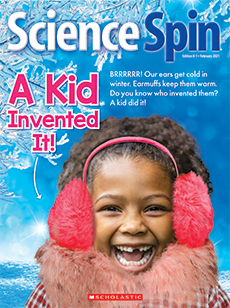November / December 2022
A Cheeky Chipmunk!
Academic Standards
Reading Objective:
Children will recognize that chipmunks gather nuts to prepare for winter hibernation.
Next Generation Science Standards:
K-ESS2-2 Animals Can Change the Environment
K-LS1 Animals’ Survival Needs
1-LS1 How Animals Use External Parts to Survive
Vocabulary:
burrow, hibernate, predator
Check comprehension and inspire discussion.
1. Does a chipmunk carry acorns in its paws?
(No. It carries acorns in its cheeks.)
2. What does hibernate mean?
(to sleep all winter)
3. What does a chipmunk dig in the ground to hibernate in?
(a burrow)
4. If you had chipmunk cheeks, what would you carry?
(Answers will vary.)
Go online to print or project the Reading Checkpoint.
- Chipmunks are members of the squirrel family.
- In one day, they can gather more than 160 acorns!
- They also eat berries, mushrooms, worms, insects, lizards, and frogs.
- Chipmunks sleep about 15 hours a day.
- They make noisy squeaks when another animal scares them or tries to take their nuts.
Materials: acorns, or manipulatives that you pretend are acorns; extra jackets for kids who lack pockets; space to scamper; pencils; copies of the skill sheet
Overview: Children will scamper like chipmunks, testing whether it’s better to carry acorns in their “paws” or their pockets.
Directions:
- Before the lesson, collect enough “acorns” for each kid or pair of kids to have a handful. Bring in real acorns, have kids collect them outside, or use manipulatives.
- Gather kids where there’s space to scamper. Remind them that predators often chase chipmunks gathering acorns. What’s the best way for a chipmunk to escape with its acorns—in its paws or in its cheek pockets?
- Predict! Which do kids think is better?
- Test! Let kids work in pairs. Give each pair a pile of acorns. Each kid gets a skill sheet. First, kids scamper on all fours with the acorns in their “paws.” Next, they carry the acorns in a pocket.
- Record results on the skill sheet.
